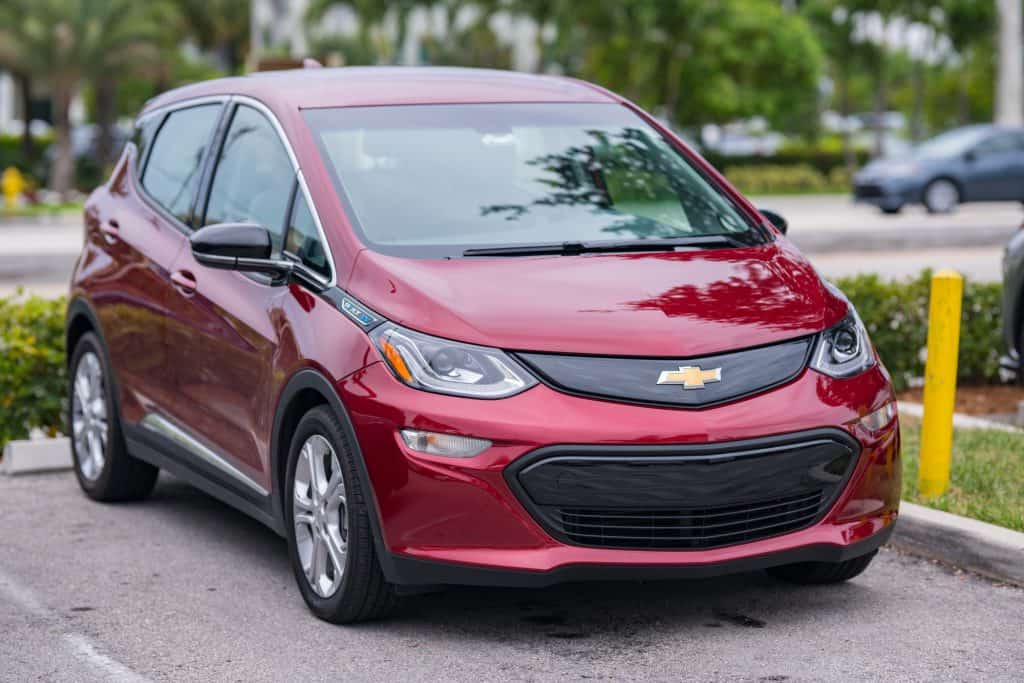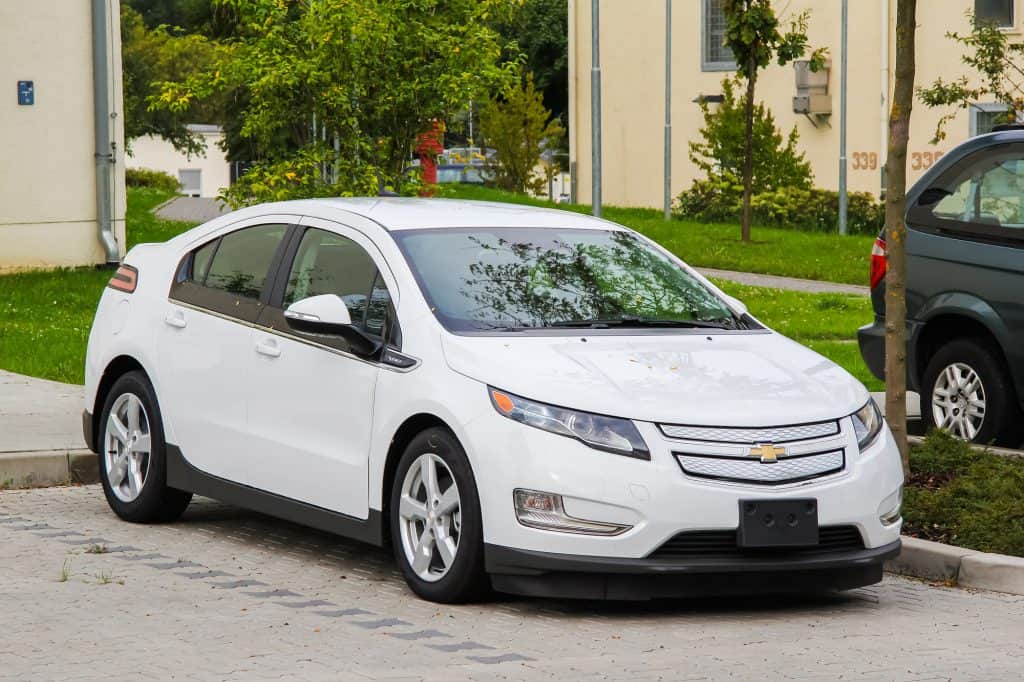As the world turns increasingly toward plug-in hybrid and electric cars, questions about old and established practices and how they relate to the new world of electric cars are common. One such practice that people wonder a great deal about is that of jump starting, that is, using jump leads to quickly transfer a small amount of power from one working battery to a flat battery in order to start the engine and thus start up the regular battery charging process.
Two of the most popular electric vehicles that have been available on the market are the Chevrolet Bolt and the Chevrolet Volt. Two cars with the same brand and obviously related names, but a number of differences, too. In today’s blog, we will be exploring the question of whether or not it’s possible for either of these cars to jump start another car. The short answer is below, but read on as there’s some important caveats:
Yes you can jump start cars with a Chevy Bolt (or Volt), but you shouldn’t really do this! The components are there to perform the job technically, but the danger of damaging your Bolt or Volt are always present when you attempt it, and so it might just not be worth trying.
Background: Difference Between Chevy Bolt and Chevy Volt
The Chevrolet Bolt is an all-electric vehicle, which would fit into the “BEV” (Battery Electric Vehicle) category. It runs entirely on a battery pack and electric motors, and has no elements of internal combustion at all:

The Chevrolet Bolt was first introduced in the 2017 model year and is by far the newer of the two. It is taller and more like a crossover in its style, somewhere in between a compact crossover SUV and a minivan. Its maximum range since 2020 has been 259 miles according to EPA ratings. It runs on a 66kWh battery. Earlier models featured a 60kWh battery that had a range of up to 238 miles according to the EPA.
The Chevrolet Volt is a plug-in hybrid vehicle, which would fit into the “PHEV” (Plug-in Hybrid Electric Vehicle) category. This means that, like a regular hybrid car, it contains both electric and internal combustion elements. Unlike a regular hybrid car, however, where the battery is charged by the running of the combustion engine, a PHEV vehicle needs to be plugged into a charging point in order to recharge:

The Chevrolet Volt is the older of the two Chevy models, first introduced back in 2010, and its second generation released in 2016. The first-generation models ran on batteries ranging from 16kWh to 17.1kWh, while the newest models starting in 2016 have an 18.6kWh battery. Electric-only range on the early models was 35-38 miles according to the EPA, but the second generation has improved greatly on that, offering 53 miles of electric range.
Jump Starting in Electric Cars – The General Picture
Taking electric cars by and large, the general rule of thumb has been that while it is technically possible to use an electric car to jump start another car, it is ill-advised. The first part of the fear is that attempting to perform a jump start might void the EV warranty. Other concerns center around various manufacturer warnings about the safety of performing a jump start between an EV and another car, and the fact that the power levels in a 12v battery in an electric car are not the same as those in an internal combustion engine car.
With these differences in play, it is generally suggested that owners of EVs do not attempt to jump start other vehicles, be they hybrids (HEV), PHEV models or regular gasoline cars. Having said all that, there are some who wonder if it holds true for both the Chevy Bolt and the Volt. The Bolt is a pure-electric vehicle, so presumably the same rule applies, but what about the Volt? Even as a plug-in hybrid car, it contains elements of traditional internal combustion engine (ICE) cars. Does that make a difference?
Can the Chevy Bolt and Volt Jump Start Another Car?
Let’s deal with the Chevy Bolt first. As an electric car, the Bolt does indeed also contain a 12-volt battery like regular ICE cars. The difference, however, is that in an ICE car, the battery has to have enough of a jolt to turn over a large and ungainly engine, possibly something monstrous like a 5.2L V8.
The 12-volt battery in an electric car like the Chevrolet Bolt is not built for the same purpose. It does have the same 12-volt rating, but it’s only used typically to power the car’s electronics. That means it is not powered at the necessary level to offer an ICE engine what it needs to start up. Another ICE vehicle’s 12-volt battery can because it has that one key critical component that an EV doesn’t — an alternator.
With the Bolt, the best policy is not to attempt it, regardless of other owners’ stories of how they used their Bolt to jump start another vehicle. While with the right kind of setup it could technically be possible, all manufacturers and other automotive organizations are quite clear about the risk of damage to the EV battery, and so warn against it. Owner’s manuals on multiple EVs are very frank and direct about this problem.
What about the Chevy Volt?

The Chevrolet Volt is a plug-in hybrid car, which means while it’s plug-in and electric, it differs from the Bolt because it contains and still principally runs on an internal combustion engine. Could its 12-volt battery be used, therefore to jump start another car?
In fact, it’s the same situation for a plug-in hybrid vehicle like the volt, and in fact even older conventional hybrids like the Toyota Prius have the same problem. These hybrid cars may contain internal combustion engines and rely on them heavily for propulsion, but they have a critical element missing compared to a regular ICE car — the starter motor.
Since the Toyota Prius, it has been the case that hybrid cars make use of their electric motors as the starting mechanism rather than the traditional ICE car method of a starter battery. These early hybrid cars do indeed contain 12-volt batteries, but these batteries are not “starter” batteries as they are in ICE models. The same is true of more modern PHEV vehicles like the Chevrolet Volt. The battery is there to boot up the computer and give power to the lights, but it’s not there to crank the engine. The engine is cranked by the electric motors, which are powered by the main battery pack.
In the end, it comes down to the same problem of something that might be technically possible, but is not a good idea all the same. Chevrolet, like Toyota and other EV makers, advise their customers against using the Volt or any other PHEV, HEV or BEV as a booster vehicle for others.
Conversely, however, the Chevrolet Volt, as with all other hybrid cars, can be jump started by an ICE vehicle. The power of a starter battery in a regular gasoline or diesel car is certainly more than enough to get your hybrid car started. Even better, the battery structure is the same, as is the basic procedure of jump starting the engine. The only somewhat tricky thing can be confirming the location of the positive and negative terminals and the battery itself. It can be rather different on some PHEV vehicles.
On the Chevy Volt, you’ll find the 12-volt battery in the back of the car, but the positive and negative terminals are in the front under the hood. The tricky thing can be sometimes if the battery is completely dead, then you can’t access the trunk because it opens electronically. There’s no manual latch on the trunk of the Chevy Volt. The good news, though, is that those positive/negative terminals are located at the front so you can jump start your Chevy Volt with regular jumper cables regardless.
What Will We Do When Everyone Goes Electric?
One interesting question that some are pondering already is about jump starting our electric cars being alright at the moment because we have a healthy stock of ICE cars to help us along. What about a few decades down the line when electric cars are the norm? Will “jump starting” even still be a thing?
The answer to this is to make use of jump start kits, which you can purchase online for between $80 and $200. There are also battery trickle chargers which can be employed to recharge a dead 12-volt battery. These are typically cheaper at $30 to $50. Such tools will be increasingly important to keep at home when you can’t rely on your neighbor’s Mustang to jump start your Volt in the morning!
Conclusion: Distinguish Between the Possible and the Advisable
Returning to our core question on the Chevy Bolt and Volt: While they can be jump started, and while technically they could be used to at least attempt to connect to another battery to jump start the engine of another car, it is not a good idea to use either Bolt or Volt as a booster for another car. The same is true for all electric vehicles.
If you want to be able to help other people with jump starting their cars after you’ve made the switch to electric, then rely on a jump starter kit or trickle charger. These are the waves of the future.
1 comment
You state that “Chevrolet, like Toyota and other EV makers, advise their customers against using the Volt or any other PHEV, HEV or BEV as a booster vehicle for others.”
This is just not true. Both the Bolt and Volt have instructions in the owners manuals for jumpstarting. In fact the Volt has separate sections for jumpstarting the Volt from another vehicle and using the Volt to jumpstart another vehicle. The risk of using either for jumpstarting is no greater than any other vehicle.